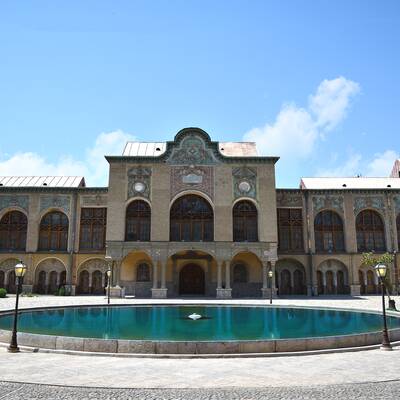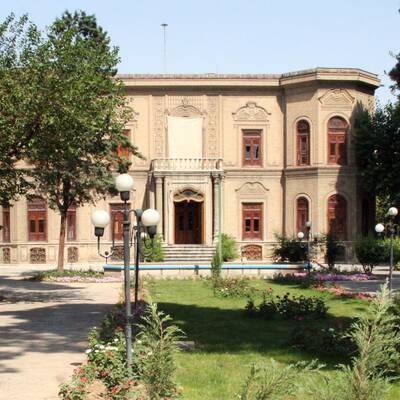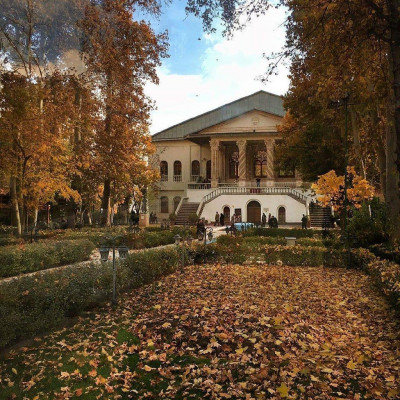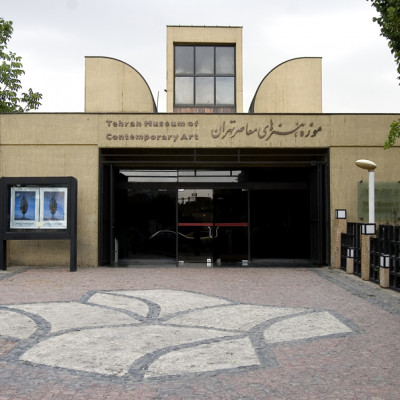Tehran Province is bordered by the Alborz Mountains to the north and the central plains and plateaus of Iran to the south. The city of Tehran is the capital and the most populous city in Iran, where various ethnic groups live.
History
The history of Tehran is intertwined with Rey. Tehran was a small village north of Rey; Rey, in turn, has been a large city and a center of politics, religion, and commerce for centuries.
For years, Tehran has been a city open to immigrants. Persian speakers, Azeris, Mazandarani, Kurds, Gilaks, and other ethnicities from all over the country make up the population of Tehran.
In the past, the people of Tehran had their own special dialect, known as Tehrani accent, which has become less common over time. The Tehrani accent is one of the accents of the Persian language, which does not have different words, while its difference lies in the grammar.
Geography
Tehran Province is home to the capital and most populous city of Iran. This province is bordered by Mazandaran to the north, Qom to the south, Semnan to the east, and Alborz to the west.
Climate
The presence of the Alborz Mountain Range, the deserts of Qom, the Qazvin plain, and the Semnan deserts have each had a different impact on the climate of this province, resulting in mixed weather conditions; the highlands of the province experience long winters, the foothills have a moist and cool climate, and the slopes have short winters and long, hot summers.
During the spring holidays when Tehranis travel to other cities, travelers from other cities come to see Tehran and visit the palaces, museums, and attractions around the city.
Cities of Tehran Province
Tehran Province has 16 counties, including Tehran, Shahriyar, Islamshahr, Baharestan, Malard, Pakdasht, Rey, Qods, Robat Karim, Varamin, Qarchak, Pardis, Damavand, Pishva, Shemiranat, and Firuzkuh.
Tehran
A common belief about the name Tehran is that the vast plain now called Tehran seemed like a pit among the surrounding mountains, so it was called Tah-ran, meaning underground.
Tehran was chosen as the capital of the country during the Qajar period and was also the capital of the Zand dynasty for a short time.
Masoudieh Mansion, one of the remaining buildings from the Qajar era located in Baharestan Square, is registered as a national monument of Iran. Masoudieh Mansion features arts such as stucco, calligraphy, tile work, and murals.
Another amazing feature survived from the Qajar period is the Abgineh Museum located on Si-e Tir Street. This museum has been registered, too. Its interior design and showcases are inspired by the columns of Persepolis, the Tachara Palace, and the Zoroastrian Ka'bah in Naqsh-e Rostam.
Ferdows Garden Mansion is another historical monument created by the order of Mohammad Shah Qajar on the outskirts of Tajrish. Ferdows Garden has today been transformed into the Iranian Cinema Museum.
Zahir al-Dawlah Cemetery in northern Tehran, between Tajrish and Imamzadeh Qasem, is the burial place of many prominent and influential figures in the culture and art of the country, including Ruhollah Moein, Abolhasan Saba, Malek o-Sho'ara-ye Bahar, and Qamar ol-Moluk Vaziri.
Imamzadeh Saleh Shrine, the burial site of one of the sons of Imam Musa Kazem, is also situated in Tajrish which hosts many pilgrims daily.
Tehran also include many palaces, like the Golestan Palace constrcuted by Safavid Shah Abbas. Shams al-Emareh, Dar ol-Emareh, Khalvat-e Karim Khani, and the Windcatcher Mansion are beautiful parts of the Golestan Palace. Shams ol-Emareh was the tallest building in Tehran at the time of its construction.
Sa'dabad Palace is one more mansion erected for the summer residence of the Qajar kings which is located in northern Tehran.
Formed by the order of Fath-Ali Shah, Niavaran is another example of Qajar palaces in Tehran. Sahebqaranieh and Ahmad Shahi Pavilion are parts of this complex.
Some of the old streets, neighborhoods, and places in Tehran
30 Tir Street
30 Tir Street is one of the aged streets of Tehran; it has now been revitalized to become one of the busiest streets in the city. New cobblestones, colorful lights, and stalls offering various foods along the street have turned 30 Tir Street into a nightly hangout for the people of Tehran.
Berlan Alley
Berlan Alley is placed in central Tehran, south of Jomhouri Square. One can find bridal clothes, wedding equipment, and also home clothes in this alley and the nearby Refahi Alley. Berlan Alley is always full of pedestrians looking for their favorite goods at reasonable prices.
Parvaneh Parking Bazar
Tehran's Friday Market, where one can buy decorative items, wooden and leather goods, clothes, etc., is situated in a multi-story parking lot - on Jomhuri Street, after Istanbul Square - which is named Parvaneh Parking Lot.
Tehran Grand Bazaar
15 Khordad Street is reminiscent of Tehran Grand Bazaar. 15 Khordad Metro Station is always crowded by passengers coming to this market from Tehran or nearby cities for shopping.
This market is a remnant of the Qajar era; it features winding alleys that twist and turn leading from one caravanserai to another. Clothes, stationery, pulses, gold, carpets, and many other things are offered here.
Shemiranat
Shemiranat or Shemroon was once adjacent to Tehran, but today, with the expansion of Tehran, Shemiranat has been divided into the northern and northeastern parts.
Marvi Alley
Marvi Alley is one of the old streets of Tehran, located near Nasser Khosrow and Pamenār. If you are looking for top-grade tea and coffee, you will definitely come across Marvi Alley; a street where the aroma of coffee is an integral part. If you are a fan of falafel, Marvi Alley will become one of your interests. Toys, various cosmetics, and foreign foods can also be found there.
Farahzad
Farahzad is one of the classical neighborhoods of Shemiran, which was a small, cool village in the past, on the way to Imamzadeh Davood. It has changed into a part of it as a result of the expansion of Tehran. Farahzad is a place of recreation for people on holidays, weekends, and especially in the summer owing to its cool climate and numerous restaurants.
Tajrish Bazaar
Tajrish Bazaar is one of the aged and spectacular markets of Tehran. Just like the Grand Bazaar of Tehran, Tajrish is roofed, and its fruit market, grocery, and perfume shops are its most popular parts. The market ends from one side to Tajrish Square and from the other side to Imamzadeh Saleh.
Rey
Rey or Raga is one of the oldest cities in the world. According to the texts of the Avesta, Rey is the thirteenth city built in the world. According to some other narrations, Zoroaster was born in Rey. The word "Rey" means royal city and in some years of the Ziyarid and Seljuk periods, it was the capital of Iran. During the Sassanian era, the region was one of the largest centers of Zoroastrianism, and its fire temple had a great reputation. Rey embraces numerous historical and cultural monuments, the most significant of which are the shrine of Ibn Babvieh, the historical bazaar of Rey, Shah Abbas Caravanserai, Toghrol Tower, Rey Fire Temple, the Holy Shrine of Hazrat Abdolazim al-Hasani, Kenargerd Caravanserai, Gabr Castle, and the tomb of Bibi Shahr Banu.
Shrine of Hazrat Abdolazim al-Hasani
Hazrat Abdolazim al-Hasani or Prince Abdolazim is one of the descendants of Imam Hassan (AS). The construction of the shrine of Hazrat Abdolazim al-Hasani dates back to the Ilkhanid, Safavid, and Qajar periods. This shrine has played a prominent role in the contemporary history; the sit-in of merchants and clerics during the Constitutional Revolution took place in this shrine.
Rey Bazaar
Rey Bazaar dates back to the Safavid era. This bazaar is located north of the tomb of Shah Abdolazim and has long been a place for selling spices, herbal medicines, and commercial goods. Rey is famous for its kebab shops, and people have been going to Rey for pilgrimage, sightseeing, and eating kebabs for years.
Firuzkuh
Firuzkuh is situated on the Tehran-Qaem Shahr Road, where people speak in the Mazandarani dialect. Because Firuzkuh has cold winters and moderate summers, people go to Firuzkuh for sightseeing in the warm months of the year. Vashi Strait, which has prominent reliefs from the Qajar period, is one of the attractions of Firuzkuh.
Accommodations
Tehran has a large number of hotels and guesthouses where travelers can choose depending on their budget. Some of these accommodations include the traditional Arg-e Sangi eco-lodge near Imamzadeh Davood, Espinas Hotel, Laleh Hotel, Avin Hotel, Esteghlal Hotel, Enghelab Hotel, Tehran Grand Hotel, Kowsar Hotel, and many more.
Restaurants
Owing to the vastness of the city and the lifestyle influenced by the grandness and speed, restaurants and foods cooked outside the home play a significant part in daily life in Tehran. Some reputed restaurants in Tehran include the Moslem Restaurant in Tehran Bazaar, best-known for its kebabs and Tah Chin dishes, Dizi Iran Shahr in a street of the same name, Azari traditional café located at the beginning of Rah Ahan Square serving flavorful Dizis, Sharif al-Islam Restaurant in the Bazaar, well-known for its Tah Chin and Zereshk Polo, Nayeb Restaurant, and many other restaurants. Jigarakies (Offal Barbeque restaurants) in Bahman Square are also very famous for the freshness of their ingredients; they are often open until late at night. Ash-e Mahdi near Tajrish, Ash-e Nikoosefat near Enghelab Square, and Pizza Davood are also popular and traditional in the city.
Local Foods
Valak Polo is a local dish of Tehran. It is made from a plant called Valak, which grows in the foothills of the Alborz Mountains in spring. Firuzkuh Tah Chin, Eshkeneh Esfenaj, Dampokhtak, Dami Balgur-e Jo, and Sargonjeshki are other local cuisines of Tehran.
Souvenirs
Damavand apple is one of the finest apples in Iran regarded as a souvenir of Tehran. Shahriyar Keshmesh (Raisins), Dough Abali, and Golaj Firuzkuh, which are local breads baked by the Firuzkuh tribes, are some other types of souvenirs of Tehran.
Handicrafts
One of the handicrafts of Tehran is Varni weaving; Varni is a combination of carpet and kilim weaving which is used as a rug. Ruduzi is another craft in which hand-sewn handicrafts are done using tambour needles on fabric; It is rarely seen today. Jajim weaving is one of the arts of which the tribes of Firuzkuh are pioneered. They used to weave high-quality Jajims from the wool of their sheep. Batik printing on fabric carried out using templates and natural colors such as turmeric, Ronak, and pomegranate was once prevalent in Tehran.
Customs and Traditions
Recitation (Naqali) has been registered as an intangible cultural heritage by UNESCO. Naqali is an art practiced in various parts of the country in the past which was also popular in old Tehran. In Naqali performances held in coffeehouses, a person with a deep voice would narrate stories from the Shahnameh while using curtains with paintings on them.
Siah-Bazi or Rooheh-Zi was a type of comedic performance in which satire was used along with music to address political, social, and cultural subjects. Rooheh-Zi is an art that is gradually fading into obscurity.

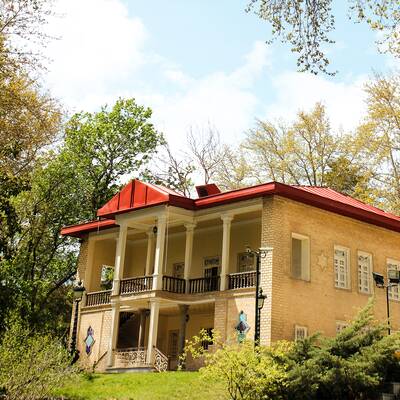
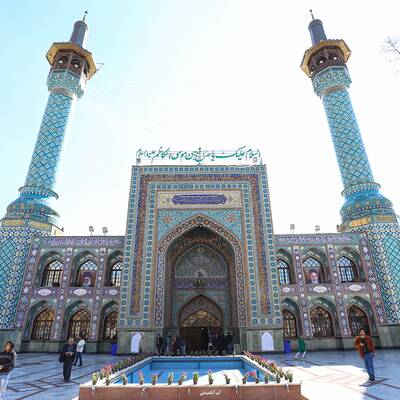

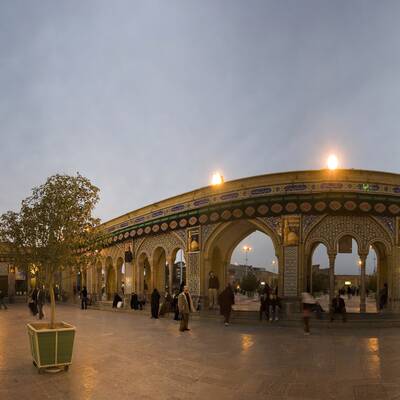
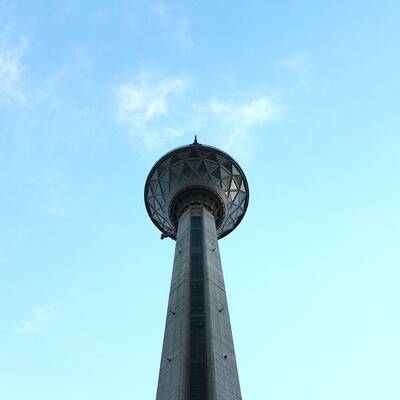

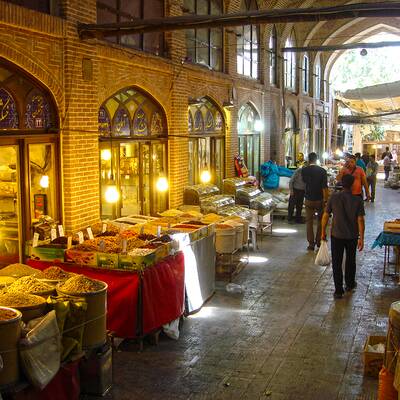
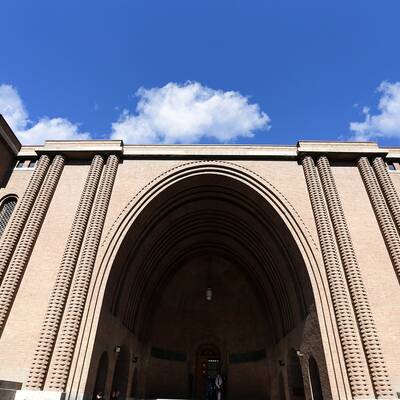
.jpg)
